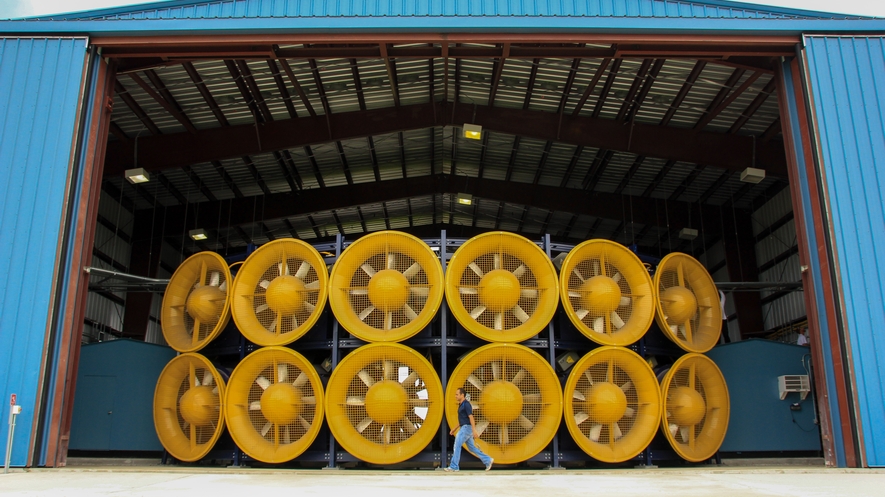On 24 September 2015, the National Science Foundation announced grants to Florida International University and University of Florida totaling nearly $8 million that will position the state to become a national hub for research into making homes and businesses safer in hurricanes and tornadoes.
FIU’s Wall of Wind and UF’s Powell Family Structures and Materials Laboratory are now among seven labs in the nation with the designation of “Experimental Facilities” under the Natural Hazards Engineering Research Infrastructure (NHERI) program, and the only two dedicated to studying extreme wind events. The facilities will attract NSF-funded researchers from throughout the nation who are working on wind engineering projects and are part of a network of scientists who study different aspects of natural hazards.
FIU’s Wall of Wind is the nation’s only full-scale simulator capable of producing Category 5 hurricane (157+ mph) winds. The 12-fan 8,400 horsepower system was inaugurated in 2012, on the 20th anniversary of Hurricane Andrew’s devastating blow to South Florida. The Wall of Wind was developed with public and private funding over nearly 10 years, and capped by a $7.5 million State of Florida Center of Excellence award in 2008. Since then, the Center of Excellence has secured projects and awards totaling more than $9 million.
A team from FIU’s Extreme Events Institute (EEI) and International Hurricane Research Center (IHRC), led by principal investigator and associate professor of civil and environmental engineering Arindam Gan Chowdhury, was awarded a five-year NHERI grant for nearly $4.1 million.
UF will receive $3.6 million to give top experts across the country access to a one-of-a-kind wind tunnel that tunes its wind field to test bridge and building models in terrains ranging from marine to terrestrial conditions. Civil, mechanical and electrical engineering students designed and built its ‘Terraformer’ system, which changes terrains on the fly. Researchers will also use dynamic pressure loading actuators—machines that ‘replay’ realistic wind loads to test buildings. The largest can replicate extreme wind loads from an EF5 tornado, the strongest wind event on the planet. The $4 million system was primarily funded by Henry Upjohn II through Michigan-based Special-Lite, Inc.
For more information, visit click here.






